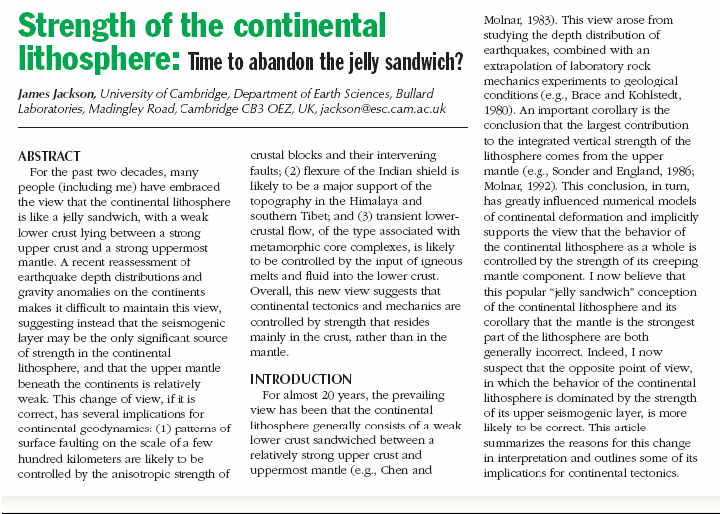Week 1
2004-05
How will you define the strength of the lithosphere ? What is the effect of temperature for moho on lithospheric strength? Why continents are more complicated than oceans. In general, continental convergence zones should have intermediate or deep focus earthquakes or not? What is the effect of topography on crustal thickness and depth of moho ? Which other factor than the temperature is related to the lithospheric strength? In the area where the Indian plate collides with the Eurasian plate, how would you explain the idea that the deeper earthquakes would have shown extension (normal faulting) and not shortening (thrust faulting) have these deep earthquakes had been at the top of a separate strong upper mantle layer? How do we get normal faulting at the shallow events (about 20 km deep)? In figure 3B, why is the gravity profile decreasing as we move to the north? 2006-07
Questions or Comments? Contact: Dr. Ali O. Oncel |